More Reviews
Reviews of video game related television shows, movies, books, and soundtracks. Plus, reviews of downloadable content, our Half-Hour Handheld featurette, and video reviews.
Professor Layton and the Unwound Future
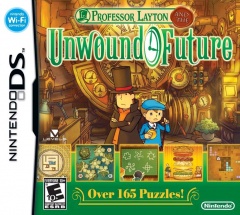 Professor Layton and the Unwound Future is the third game in the popular point and click puzzle series on the Nintendo DS. Since I love the series and was going to play the game no matter what, I've decided just to play the first half hour for my readers so you can get a taste of what's to come. Having just been released last week, Unwound Future appears to be another great entry into the series.
Professor Layton and the Unwound Future is the third game in the popular point and click puzzle series on the Nintendo DS. Since I love the series and was going to play the game no matter what, I've decided just to play the first half hour for my readers so you can get a taste of what's to come. Having just been released last week, Unwound Future appears to be another great entry into the series.For those unfamiliar, the Professor Layton series is developed by Level-5 (yeah, the developers of Dragon Quest IX, these guys are on a serious portable roll) and the first two games in the series were also released on the Nintendo DS. Curious Village saw the North American light in early 2008 and Diabolical Box about this time last year. The games, like the Ace Attorney series before it, are always seeming to play catch up with the Japanese releases; Unwound Future was released two years ago in Japan and the unannounced-outside-Japan Spectre's Flute was released last year. The one nice thing about playing catch up is that you know the great games will continue rolling our way for at least a few more years.
Professory Layton is a fun mix of the point and click genre and Mensa-like brain teasers. The story progresses as you discover clues and solve puzzles, and will seriously push your brain to its limit as the game progresses. As someone who enjoys this kind of challenge, this series has quickly become one of my favorites.
So can Unwound Future continue the series' success with me? Let's play and find out, here's its first half hour.
Lara Croft Tomb Raider: The Cradle of Life
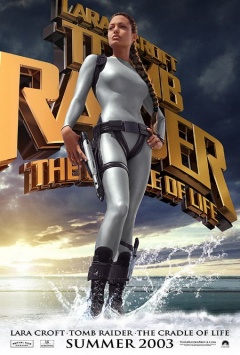 I don't watch a lot of video game movies, they're generally bad, especially if you're familiar with the game series, then you're just up for disappointment. For better or worse, I've only played a few hours of the Tomb Raider series, and that was only the first few games, so I don't have a lot of expectations for another Lara Croft film. I watched the first one in college back in 2002 and have absolutely no memories of it except for Angelina Jolie.
I don't watch a lot of video game movies, they're generally bad, especially if you're familiar with the game series, then you're just up for disappointment. For better or worse, I've only played a few hours of the Tomb Raider series, and that was only the first few games, so I don't have a lot of expectations for another Lara Croft film. I watched the first one in college back in 2002 and have absolutely no memories of it except for Angelina Jolie.Lara Croft Tomb Raider: The Cradle of Life is the original's 2003 sequel starring Angelina Jolie and Gerard Butler. Butler managed to film Tomb Raider 2 in between the now classics Reign of Fire and Timeline (I'll admit, I kind of enjoyed those two). The movie was panned by critics and performed relatively poorly at the box office.
I'm writing this as I watch the movie, as sometimes it is possible to do two things at once, especially when one of them is watching this bomb that I've had from Netflix almost two weeks.
DK: Jungle Climber
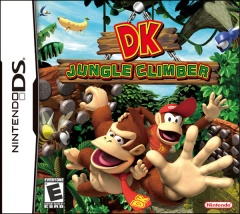 One of the more common complaints you'll hear from Nintendo ex-fans is
that the Big N hasn't made any new franchises in a very long time. For
evidence, critics often point to Super Smash Bros. Brawl,
the game that has become a showcase for iconic Nintendo characters past
and present, and correctly note that none of the game's playable
characters are from a franchise created after 2001's Pikmin.
You'd think the one game that celebrates the whole history of
Nintendo's creations would put some recent stars at the forefront, and
yet there are none.
One of the more common complaints you'll hear from Nintendo ex-fans is
that the Big N hasn't made any new franchises in a very long time. For
evidence, critics often point to Super Smash Bros. Brawl,
the game that has become a showcase for iconic Nintendo characters past
and present, and correctly note that none of the game's playable
characters are from a franchise created after 2001's Pikmin.
You'd think the one game that celebrates the whole history of
Nintendo's creations would put some recent stars at the forefront, and
yet there are none.
There's a point to be made there, but I don't think it's that Nintendo isn't creating new experiences. Nintendo has been delivering unique titles all along, but skinning them with familiar faces in an effort to grab the mass-market that buys based on brand name alone. It's a practice that probably went into full swing after the amazing success of Super Mario Kart, a racing game that could have been released with the image of any other combat-focused racer and nobody would have ever thought to liken it to the Super Mario series. Nintendo found a way to make the racing formula mesh with a beloved franchise and exploited the mustached plumber's image for instant brand recognition on a whole new product. It wasn't long before every Nintendo character became a pitchman: the ever-adaptable Kirby was a given, and other Mario-verse mascots like Yoshi and Wario weren't stretches either, but even seemingly untouchable characters like Samus and Link are now lending their images to genres that only vaguely fit into their traditional roles.
Enter DK: King of Swing on the Game Boy Advance in 2005. The game could be categorized as a platformer, but the focus on running and jumping had shifted to climbing and swinging, using the system's shoulder buttons. King of Swing received enough positive reviews and sales to spawn a sequel, DK: Jungle Climber, for the Nintendo DS in 2007. Like many hardcore gamers, this game launched well under my radar, but I recently gave the game a shot. Is the stigma of a spinoff warranted, or will I see something new underneath the same old monkey business?Broken Sword: Shadow of the Templars
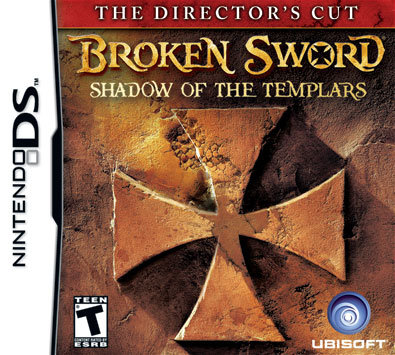 Broken Sword is not a new game. In fact, it was released back in 1996, a year so far gone that I barely remember anything about it. I know I did not experience Broken Sword then or even heard of it; I was just a lad with a PlayStation and a little RPG called Suikoden to occupy my time. Broken Sword only existed in my mainframe later on as a cult thing, something people talked about playing, but were never caught playing. I later played other point-and-click games like Maniac Mansion: Day of the Tentacle and Escape from Monkey Island yet never got to try this “classic.” Then I discovered it in my mother’s DS collection (yes, she plays) a few weeks back and found my chance to try it out for the very first time, some 14 years later. And this is the Director’s Cut which, I guess, means something.
Broken Sword is not a new game. In fact, it was released back in 1996, a year so far gone that I barely remember anything about it. I know I did not experience Broken Sword then or even heard of it; I was just a lad with a PlayStation and a little RPG called Suikoden to occupy my time. Broken Sword only existed in my mainframe later on as a cult thing, something people talked about playing, but were never caught playing. I later played other point-and-click games like Maniac Mansion: Day of the Tentacle and Escape from Monkey Island yet never got to try this “classic.” Then I discovered it in my mother’s DS collection (yes, she plays) a few weeks back and found my chance to try it out for the very first time, some 14 years later. And this is the Director’s Cut which, I guess, means something.As it’s a story-heavy Nintendo DS game, this is only a half-hour review. I hope it hits all the points and really clicks! Um, I apologize for that…I know it was a stretch.
Bangai-O Spirits
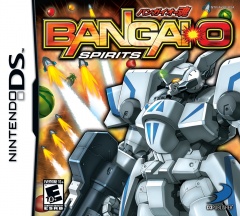 It seems I've been on a bit of a Treasure fix lately. Last month, I finally got around to playing Gunstar Heroes,
the first Virtual Console game I bought back in 2006 and Treasure's
very first game. The Genesis cult classic set the niche developer's tone
by throwing unprecedented amounts of enemies and projectiles at the
player from start to finish. A few weeks ago, I tried out the VC release
of N64 import darling Sin & Punishment, which warmed the heart of this old Star Fox 64 veteran. I've also begun playing that game's recent Wii sequel, Sin & Punishment: Star Successor, and should have my thoughts on that title up soon.
It seems I've been on a bit of a Treasure fix lately. Last month, I finally got around to playing Gunstar Heroes,
the first Virtual Console game I bought back in 2006 and Treasure's
very first game. The Genesis cult classic set the niche developer's tone
by throwing unprecedented amounts of enemies and projectiles at the
player from start to finish. A few weeks ago, I tried out the VC release
of N64 import darling Sin & Punishment, which warmed the heart of this old Star Fox 64 veteran. I've also begun playing that game's recent Wii sequel, Sin & Punishment: Star Successor, and should have my thoughts on that title up soon.But today's subject is Bangai-O Spirits, a critically-praised title that didn't sell very much (as expected), though chalk up one more sale for Treasure: the $8.75 price tag on Amazon was an offer I couldn't refuse. This 2008 DS title is a sequel of sorts to the Dreamcast's Bangai-O (and its lesser-known, Japanese-exclusive N64 counterpart). True to Treasure's modus operandi, Bangai-O Spirits challenges the player to battle through 150+ stages filled with overwhelming swarms of enemy missiles and bullets on-screen. The game also features two- to four-player wireless cooperative and competitive battles and a robust set of stage editing and sharing features.
Treasure is a company known for making difficult games, and Bangai-O is noted as one of the developer's tougher titles. There's no question I'll crash and burn in my first thirty minutes with Bangai-O Spirits, but will I emerge from the wreckage seething or satisfied?
Castlevania: Dawn of Sorrow
 Few gaming series have changed as much as Castlevania. What started off as an action platformer evolved into an exploration focused action RPG with the release of Symphony of the Night, a genre which has been dubbed “Metroidvania.” This style for the series wouldn’t be seen again for several years until it hit the most unlikely of platforms: the Game Boy Advance. Handheld gaming rekindled interest in the series, and since Circle of the Moon in 2001, six handheld Castlevania titles have been released. Dawn of Sorrow is the first one for the DS, and is a direct sequel to the final GBA Castlevania game. Since these games are rather short and focus heavily on post game content and speed runs, I’ve decided to do a half hour review. This has nothing to do with the fact that Dragon Quest IX comes out this week and I’d rather play that than write. Nothing at all!
Few gaming series have changed as much as Castlevania. What started off as an action platformer evolved into an exploration focused action RPG with the release of Symphony of the Night, a genre which has been dubbed “Metroidvania.” This style for the series wouldn’t be seen again for several years until it hit the most unlikely of platforms: the Game Boy Advance. Handheld gaming rekindled interest in the series, and since Circle of the Moon in 2001, six handheld Castlevania titles have been released. Dawn of Sorrow is the first one for the DS, and is a direct sequel to the final GBA Castlevania game. Since these games are rather short and focus heavily on post game content and speed runs, I’ve decided to do a half hour review. This has nothing to do with the fact that Dragon Quest IX comes out this week and I’d rather play that than write. Nothing at all!Borderlands: The Zombie Island of Dr. Ned
 If there’s a formula that has worked the last couple of years for video games, it is that zombies makes things more fun. Call of Duty: World at War was wildly successful with Nazi Zombie mode, and the Left 4 Dead series is one of the most popular online games played today. In the near future, Dead Rising 2 will be released and Crackdown 2 will feature zombies roaming around the city during the night. Just about the only series moving away from zombies is Resident Evil, with both 4 and 5 featuring a lack of undead we know and love.
If there’s a formula that has worked the last couple of years for video games, it is that zombies makes things more fun. Call of Duty: World at War was wildly successful with Nazi Zombie mode, and the Left 4 Dead series is one of the most popular online games played today. In the near future, Dead Rising 2 will be released and Crackdown 2 will feature zombies roaming around the city during the night. Just about the only series moving away from zombies is Resident Evil, with both 4 and 5 featuring a lack of undead we know and love.So it probably came of little surprise when Gearbox announced the first piece of downloadable content for Borderlands would be about zombies. The Zombie Island of Dr. Ned to be exact. The name itself is intriguing to veterans of the game, as Dr. Zed was a friendly NPC that helped you on your quest for the Vault, raising the question: who is Dr. Ned compared to Dr. Zed?
The answers lie within this multi-hour extra, along with many, many zombies to blow away. This DLC is available via download or by buying the Double Game Add-on Pack disc which contains Zombie Island and Mad Moxxi’s Underdome Riot, which I’ll be playing next. The disc is useful for a number of reasons, while the initial price is the same as if you bought the add-ons online, you can pass the disc on to friends or even resell it. The only catch is if your hard drive gets wiped or you uninstall the content, you’ll have to install the DLC from the disc again.
Picross 3D
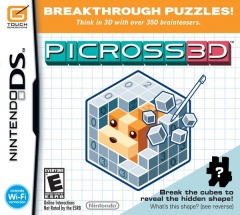 Picross 3D is the latest brain-teaser game for the Nintendo DS. If you're not familiar with the concept of Picross,
it's a simple puzzle game: a grid of squares is presented, and numbers
next to the rows or columns indicate how many squares in that column or
row should be colored in. As squares are colored in, they clue the
player in on what other squares should be colored in. The end result is
a crude object, like a person or a clock. It's simple enough that it
could be done on graph paper, but Nintendo has made millions of dollars
collecting these puzzles and putting them in videogames, most recently Picross DS a few years ago.
Picross 3D is the latest brain-teaser game for the Nintendo DS. If you're not familiar with the concept of Picross,
it's a simple puzzle game: a grid of squares is presented, and numbers
next to the rows or columns indicate how many squares in that column or
row should be colored in. As squares are colored in, they clue the
player in on what other squares should be colored in. The end result is
a crude object, like a person or a clock. It's simple enough that it
could be done on graph paper, but Nintendo has made millions of dollars
collecting these puzzles and putting them in videogames, most recently Picross DS a few years ago.
Picross 3D takes the concept in three dimensions, giving the player a large cube or rectangular prism made up of blocks. Remove the right blocks and an object appears. The concept is almost as simple in 3D as it is on graph paper, though it would be nigh-impossible to do with physical objects. It's well-suited for videogames, however, where virtual representations can easily be created.
As someone who enjoys brain-teasers and puzzle games, I have a feeling I'll enjoy Picross 3D as long as I'm sufficiently challenged. But this is one of those new-fangled "Casual games" that seem to be popping up everywhere nowadays and trying to appeal to everybody, so it may be oversimplified or very slow to start. Let's find out.Mass Effect 2: Kasumi's Stolen Memory
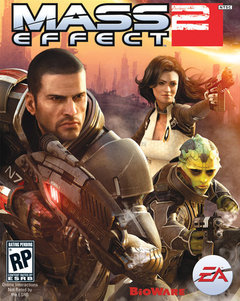 Kasumi's Stolen Memory is the first major paid downloadable content
available for Mass Effect 2. It was released earlier this month after
a slew of "free" content for those who bought the game new (I'll
eventually go back and review each of the major DLC's including Zaeed
and the Firewalker pack). For 560 Microsoft Points ($7 USD) you can
recruit a new crew member, play a new loyalty mission, get a new SMG
and casual outfit, and satisfy your curiosity of what happened to a
bunch of famous relics on Earth.
Kasumi's Stolen Memory is the first major paid downloadable content
available for Mass Effect 2. It was released earlier this month after
a slew of "free" content for those who bought the game new (I'll
eventually go back and review each of the major DLC's including Zaeed
and the Firewalker pack). For 560 Microsoft Points ($7 USD) you can
recruit a new crew member, play a new loyalty mission, get a new SMG
and casual outfit, and satisfy your curiosity of what happened to a
bunch of famous relics on Earth.
This is almost less of a review, and more of a walkthrough of the actual content, but it's a fun way to describe all the new stuff packed into the DLC. My recommendation is that Stolen Memory is a really great piece of content and is worth its purchase price for big fans of the series, but probably not worth it if you've already moved on completely. Here's my review of Kasumi's Stolen Memory, played as a renegade female Shepard.Glory of Heracles
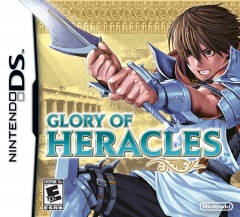 Glory of Heracles is a DS RPG published by Nintendo and developed by Paon. It attempts to harken back to the old school of RPGs, leaning toward the SNES era.
Glory of Heracles is a DS RPG published by Nintendo and developed by Paon. It attempts to harken back to the old school of RPGs, leaning toward the SNES era.The playing of this game by me will discover whether this game achieves that goal, and if that goal is worthy. Are SNES RPGs still relevant? Have we moved on, or will the sense of nostalgia be enough to reel us in?
Glory of Heracles was actually a series of games in Japan published by Data East since 1987. Nintendo acquired the rights when Data East went bankrupt in 2003. This is the first game to make it to the west; apparently Nintendo is hoping to pull a Fire Emblem.
